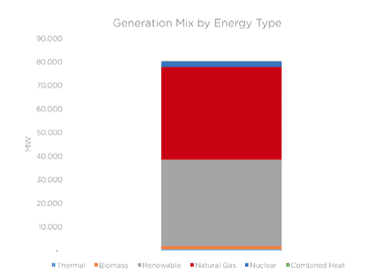Energy Planning, Security of Supply, and The Energy Transition Conundrum

Currently, the west coast of Canada and the US Northwest are experiencing record temperatures with the onset of the 2021 Summer. Texas and California had heat waves in early June that prompted the issuance of energy conservation orders and operational alerts in the two most populated states in the US, as the Independent System Operators (ISOs) tried to prevent outages. This issue comes after the extreme February Freeze which led to significant outages in Texas and Northern Mexico causing record levels for gas prices in the US.

These events have brought forth the need to discuss the security of energy supply and why electricity supply cannot be guaranteed under certain extreme weather conditions. Some people argue that there is too much renewable generation, whereas other people blame poor planning for the potential insufficient electricity supply conditions. Regardless of what the real reasons are, the current reality is that ISOs, policymakers, and end-users around the world are frantically reviewing and devising new policies, planning scenarios and energy supply strategies to come to terms with electricity markets being impacted by climate change, energy transition, and the increase in demand while trying to keep electricity costs down.
The challenge to develop a resilient, low carbon and efficient electricity infrastructure that can guarantee energy supply can have some resemblance of the so-called “iron triangle” where businesses and consumers can only achieve two of these three concepts good, fast and cheap. For example, having a state-of-the-art electricity grid without the associated price tag is not possible anytime soon. This means that the main challenge is determining the cost-benefit and long-term effect of the different approaches that can be taken in planning for the electricity markets and grids of the future.
One way to overcome this issue is to think far ahead, considering different possible scenarios and consider the current trends, so you can work through the complex issues faced in a logical way. In this context, four factors can emerge as basic foundations for the development of successful planning scenarios; and encompass the challenges faced in planning the electricity markets of the future:
• Extreme and serious weather events are likely to happen more often, which will test the resilience of electricity infrastructure
• The demand for renewable generation at utility and domestic scale will continue to grow as C&I and residential users try to reduce their carbon footprint and costs
• C&I end-users embracing the concept of a decentralized energy supply models through on-site generation capabilities
• Increase electrification of transportation will likely translate to a subsequent increase in demand
One important aspect that is significant in this matter is the way the electricity rates are and will be set to support the grid modernization efforts. Electricity rate setting can guide the end-user and utilities’ investment in the grid which will affect reliability, operating costs, and energy bills both in the short and long term.
Energy rates send powerful signals to end-users that influence energy consumption and how utilities make capital investments. For example, traditional rate setting assumes that utilities meet all customer electricity demand with large and centralized generation facilities.
However, this model is gradually being phased out as technology and distributed generation resources are creating benefits for both utilities and end-users alike. The trend is to create an electricity rate that:
• Provides utilities with a stable source of income amidst an environment where demand can fluctuate
• Provides enough income to maintain and develop the electricity grid; and
• Incentivizes end-users to continue engaging in energy conservation and resources
As we have seen, the problem is complex with no easy or fast solution in sight. However, any government and ISO policy planning decision must be inclusive and flexible enough to adapt to the complexities of the grid and changes in market conditions driven by variations in energy consumption due to preferences or unforeseen developments.
As such, planning processes must incorporate knowledgeable stakeholders and create a comprehensive grid modernization roadmap. It also helps establishing goals that guide and align the policy and regulatory decisions that will have far-reaching effects on resiliency, competition, reliability, efficiency, and cost.
In the meantime, business leaders must consider the evolution of energy and their businesses’ ability to leverage and protect their competitivity and commitment to the environment as part of their strategy amidst this uncertainty.




